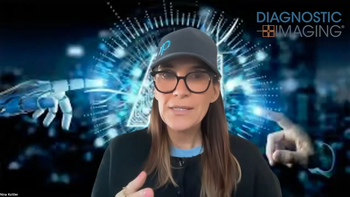
Priceless? Worthless? Or Clueless?
In radiology, being clueless, like being ignorant, can be bliss.
Every now and then, I’ll be talking with someone outside of the healthcare industry, or even within it but external to radiology, and the question will come up: How much does an X-ray cost? An ultrasound? CT? MRI?
The most honest and succinct answer I can usually offer is “I don’t know.” If I know the other individual well enough, I might punctuate this seemingly-bizarre ignorance of my own livelihood with a “duh” worthy of Moose from the Archie comics. I can tell you that most of the other docs I know would have little to add.
If one is unable to even vaguely estimate the value of a particular good or service, there are a few possible implications: he thinks its value is beyond measure (priceless), he thinks it is negligible (worthless) or he is insufficiently familiar with the subject (clueless).
Being clueless is generally not a formula for success in running a business. If a venture is to financially survive, let alone thrive, it has to live within its means. Rising overhead requires adaptive responses like reducing voluntary expenses, passing on costs to customers with raised prices, etc. Just imagine a business trying to do this without a knowledge of what price-tag is attached to its goods and services.
And yet, that’s exactly the way it is in healthcare, and in specialties like radiology in particular. Forget about the minority of docs who have achieved positions high on their respective chains of command who actually get to negotiate with insurers, hospitals, etc. regarding terms of coverage…I’m talking about those of us actually doing the lion’s share of the work.
[[{"type":"media","view_mode":"media_crop","fid":"25889","attributes":{"alt":"","class":"media-image media-image-right","id":"media_crop_5395335492212","media_crop_h":"0","media_crop_image_style":"-1","media_crop_instance":"2434","media_crop_rotate":"0","media_crop_scale_h":"0","media_crop_scale_w":"0","media_crop_w":"0","media_crop_x":"0","media_crop_y":"0","style":"margin: 1px; border-style: solid; line-height: 1.538em; height: 150px; width: 150px; float: right;","title":" ","typeof":"foaf:Image"}}]]
I’ve seen docs play mind games with themselves regarding how much they, personally, are getting for their work. Dividing salary by number of hours worked, for instance, or by the number of cases they’ve done. But this is just rehashing the financial relationship between the docs and their employers; it doesn’t get at the actual cost (or value) of the services being provided.
Occasionally, you’ll see someone in our field trying to educate himself on the subject, but this is often aborted upon discovery that the information is hardly easy to find, let alone displayed publically in a simple, straightforward format for all to see and comprehend. Further, all details are subject to change without notice or predictability by the “Powers That Be.”
Many find it easier (and more comfortable) to save their time and trouble for other pursuits. Especially if previous efforts at self-enlightenment have revealed that, even when you understand the nuts and bolts of the system, you have no ability to do anything about it…the government or your insurers are able to unilaterally tell you that you will now get 50 percent of what you used to for your work, and all your understanding does is allow you to recognize just how raw a deal you are getting. Willful cluelessness, as with ignorance in other circumstances, can be bliss.
Newsletter
Stay at the forefront of radiology with the Diagnostic Imaging newsletter, delivering the latest news, clinical insights, and imaging advancements for today’s radiologists.




























